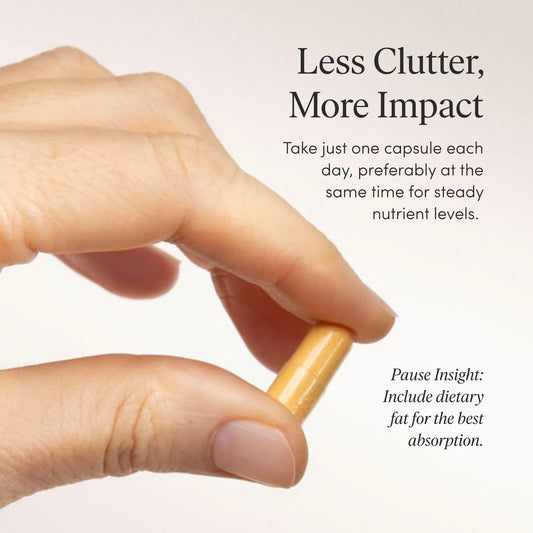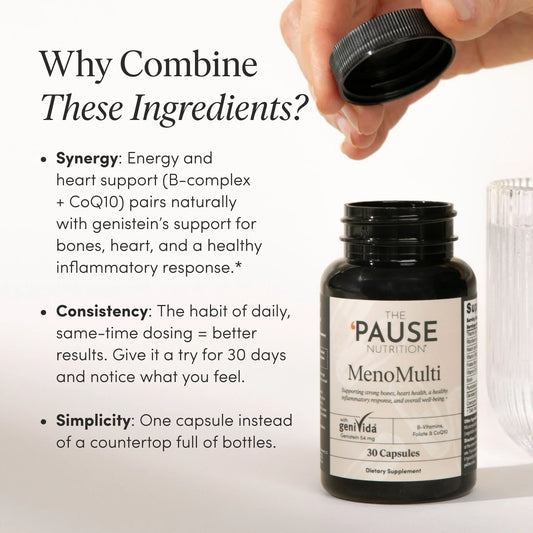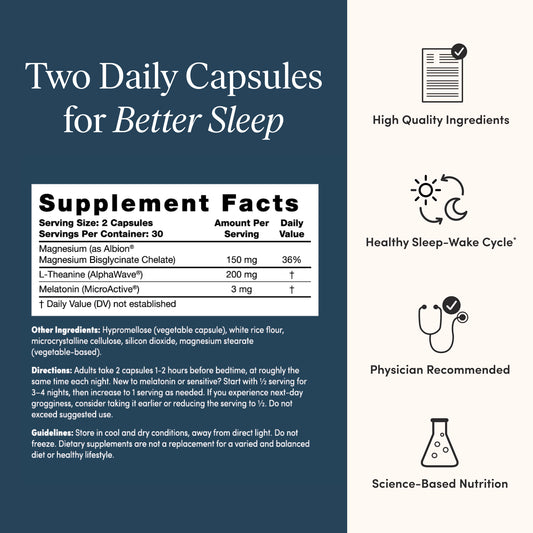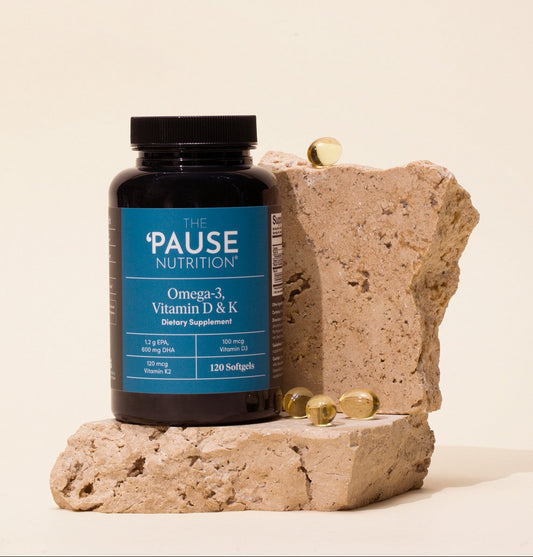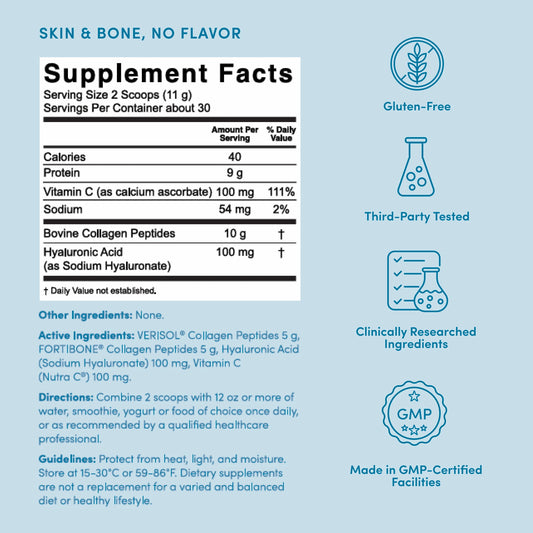Understanding the Link Between Menopause and Depression

Share
Understanding the Link Between Menopause and Depression
We all know mood changes are common with the menopause transition. Studies suggest 45% to 68% of perimenopausal women have symptoms of depression (1). Depression can affect not only your mood but all aspects of your life. You may struggle with motivation to take care of yourself and others, focus on work, or even just get out of bed some days.
Researchers have identified the menopause transition (MT) as a “window of vulnerability” (1) where we have more risk for developing both depression and anxiety. Why is depression problematic during menopause, and what can you do if depression is looming over your day-to-day? Let’s dive into the evidence.
Why women experience depression in menopause
Researchers believe multiple issues are at play during perimenopause that increase depressive symptoms. These include vasomotor symptoms, the type of menopause, hormones, life stressors, and a prior history of depression.
Vasomotor symptoms: Symptoms such as night sweats or hot flashes are called vasomotor symptoms (VMS). VMS affects up to 80% of women and these symptoms commonly occur during the MT and can significantly disrupt normal sleep patterns (11). Researchers found women with frequent or severe VMS are more likely to experience a depressed mood, largely because of sleep disturbances. Interestingly, they also found women with a baseline of depression experience more VMS than those without depression (4).
Timing and type of menopause: Natural menopause occurs as a result of the aging process. Surgical menopause occurs instantly when both ovaries are removed during a medical procedure. Studies show surgical menopause poses a greater risk for someone to develop depressive symptoms, likely due to the abrupt change in hormones (5,6,7,8). The depressive symptoms also may occur even with the use of menopause replacement therapy (MRT) (8). Multiple studies have found the longer someone spends transitioning into menopause, the greater the depressive symptoms.
Sex hormones: Hormones such as estrogen, progesterone, and testosterone, decline during menopause, however researchers are not always finding that changes in hormone levels cause depression. There is some speculation that women with a prior history of depression may have more sensitivity to hormone changes, which could contribute to increased depression when hormones fluctuate (9).
Stressful life events: Life stressors at any time have the potential to trigger depressive symptoms. Stressful life events may include a divorce, loss of a job, death of a family member, and financial struggles. Lack of social support, issues with adult children, and decreased sexual activity may also trigger depressive symptoms (10).
Prior history of depression: The biggest risk factor for depression during the menopause transition appears to be a history of depression. This includes a history of post-partum depression (10). A 13-year study of people going through the menopause transition found depressive symptoms were 50-65% higher in those with a previous depressive disorder (12). New onset of depression is much less common with the menopause transition.
What depression looks like
You can experience depressive symptoms without having depression. Life changes or stressors, such as losing a job or becoming an empty-nester, can trigger depression symptoms, but clinical depression is different. When you experience clinical depression, the symptoms occur nearly every day for at least two weeks and involve more than just feelings of sadness (2). Thoughts of death or suicide are not required for someone to have depression but do occur for some. With depression, you may feel:
- Persistent sadness, “empty,” hopeless, or anxious
- Irritable, frustrated, or restless
- Worthless, guilty, or helpless
- Loss of enjoyment or interest in activities or hobbies
- Fatigue, lack of energy, or feeling slowed down
- Physical aches or pains, headaches, cramps, or digestive problems without a clear physical cause that do not go away with treatment
Sound familiar? The classic symptoms of depression overlap many of the menopause symptoms (1), which may confound some healthcare providers. Some overlapping symptoms include:
- Hot flushes and night sweats
- Difficulty sleeping, waking too early
- Lack of interest in sexual activity or difficulty achieving orgasm
- Unexpected weight changes
- Decreased energy
Everyone experiences symptoms differently. Some people will only experience a few symptoms, while others may have many. Depressive symptoms can interfere with normal day-to-day functioning and cause significant distress for the person going through them (2). Depression can also trigger changes in a person’s behavior that is out of character (2).
- Increased anger or irritability
- Withdrawing or isolating from others, including family and friends
- Engaging in high-risk activities
- Greater drug or alcohol use
- Letting responsibilities with family or work or other important roles slide
What you can do to address depressive symptoms
If you are personally noticing an increase or worsening of depressive symptoms, or if your partner or a friend is pointing them out, talk with your healthcare provider and ask for an assessment. Remember, not all depressive symptoms are depression. If true depression is present, counseling and medications are available.
When symptoms are present but depression is not, your healthcare provider can help you address the issues that are contributing to your symptoms. This may include finding methods to help you sleep better – such as treating night sweats or hot flashes.
Depression may be an unexpected issue for you as you transition into menopause. But it does not need to become debilitating. When managing your self-care, your mental health is just as important as your physical health. Getting adequate screening and treatment may help you feel like yourself again and your wellbeing is worth the effort.


















